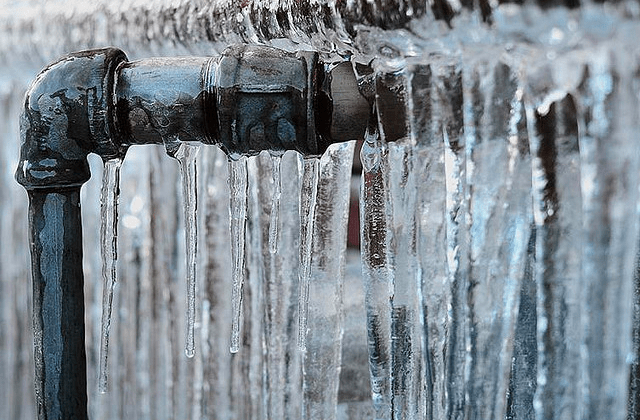Protecting Pipes from Freezing Damage: Critical Strategies
Protecting Pipes from Freezing Damage: Critical Strategies
Blog Article
Right here further down you can discover a good deal of decent additional info in regards to How to Prevent Your Pipes From Freezing.

Cold weather can wreak havoc on your pipes, particularly by freezing pipes. Right here's exactly how to prevent it from occurring and what to do if it does.
Introduction
As temperatures decline, the threat of frozen pipelines rises, potentially leading to costly repair work and water damages. Recognizing just how to prevent icy pipelines is crucial for homeowners in cool environments.
Recognizing Icy Pipes
What causes pipes to ice up?
Pipelines freeze when exposed to temperature levels below 32 ° F (0 ° C) for expanded periods. As water inside the pipes ices up, it expands, putting pressure on the pipe walls and potentially triggering them to break.
Threats and damages
Icy pipelines can cause water supply interruptions, residential property damages, and costly repair work. Burst pipelines can flood homes and create comprehensive architectural damage.
Signs of Frozen Piping
Recognizing icy pipelines early can avoid them from bursting.
How to identify icy pipelines
Look for lowered water flow from faucets, uncommon odors or noises from pipelines, and visible frost on revealed pipes.
Prevention Tips
Protecting susceptible pipes
Wrap pipelines in insulation sleeves or make use of warmth tape to shield them from freezing temperature levels. Focus on pipes in unheated or external locations of the home.
Heating techniques
Maintain interior rooms adequately warmed, especially locations with plumbing. Open up closet doors to permit warm air to distribute around pipelines under sinks.
Shielding Exterior Pipes
Yard hoses and outdoor faucets
Detach and drain garden hoses prior to winter months. Mount frost-proof faucets or cover outside faucets with insulated caps.
What to Do If Your Pipes Freeze
Immediate actions to take
If you suspect icy pipelines, keep faucets open to ease pressure as the ice melts. Make use of a hairdryer or towels taken in warm water to thaw pipes slowly.
Long-Term Solutions
Architectural modifications
Consider rerouting pipes away from exterior wall surfaces or unheated areas. Include added insulation to attics, basements, and crawl spaces.
Upgrading insulation
Invest in top notch insulation for pipelines, attic rooms, and wall surfaces. Correct insulation helps maintain constant temperature levels and minimizes the risk of icy pipes.
Final thought
Protecting against icy pipes needs aggressive actions and quick responses. By recognizing the reasons, indications, and safety nets, homeowners can protect their pipes throughout cold weather.
6 Proven Ways to Prevent Frozen Pipes and Protect Your Home
Disconnect and Drain Garden Hoses
Before winter arrives, start by disconnecting your garden hoses and draining any remaining water. Close the shut-off valves that supply outdoor hose bibs and leave the outdoor faucet open to allow any residual water to drain. For extra protection, consider using faucet covers throughout the colder months. It’s also important to drain water from any sprinkler supply lines following the manufacturer’s directions.
Insulate Exposed Pipes
Insulating your pipes is an effective way to prevent freezing. Pipe insulation is readily available at home improvement stores and is relatively inexpensive. Pay close attention to pipes in unheated areas such as the attic, basement, crawl spaces, or garage. Apply foam insulation generously to create a buffer against the cold. You can also wrap your pipes in heat tape or thermostat-controlled heat cables for added warmth.
Seal Air Leaks
Inspect your home for any cracks or openings that could let in cold air. Seal any holes around the piping in interior or exterior walls, as well as the sill plates where your home rests on its foundation. Additionally, make sure to keep your garage door closed unless you’re entering or exiting. Leaving it open creates a significant air leak that can lead to frozen pipes.
Allow Warm Air Circulation
During cold snaps, it’s essential to allow warm air to circulate evenly throughout your home. Leave interior doors ajar to promote better airflow. Open kitchen and bathroom cabinets to help distribute heat consistently around the rooms. If you have small children or pets, be sure to remove any household chemicals or potentially harmful cleaners from open cabinets for safety.
Let Faucets Drip
A small trickle of water can make a big difference in preventing ice formation inside your pipes. When temperatures drop significantly, start a drip of water from all faucets served by exposed pipes. This continuous flow helps prevent the water from freezing. Additionally, running a few faucets slightly can relieve pressure inside the pipes, reducing the chances of a rupture if the water inside does freeze.
https://choateshvac.com/6-proven-ways-to-prevent-frozen-pipes-and-protect-your-home/

We are very eager about 6 Ways to Prevent Frozen Pipes and I really hope you enjoyed the new blog post. Sharing is nice. Helping people is fun. Thanks for your time. Kindly stop by our site back soon.
Get Quote Now Report this page